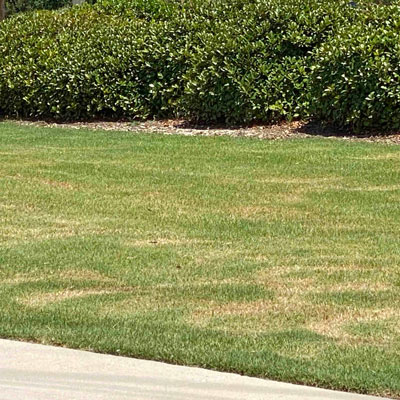Question of the Week – Number 3: August 6, 2020
“What is causing these uneven patterns when my lawn is mowed? How can I stop it?”

When this piece of lawn was started, it was laid down as sod. The ground was not raked smooth, and the sod was merely thrown down on top of the rough terrain. As a result, there are humps and bumps, hills and valleys.
And, the bad news is that there isn’t an easy fix to avoid that as you mow, because your mower’s wheels are going to drop down into the cracks allowing the blade to scalp the grass each time in each place.
The several work-arounds that you do have:
• Fill in the low areas with sandy loam topsoil. If you do this, be certain that the soil you bring in is free of nutsedge (“nutgrass”) contamination. Use a square-bladed shovel to sprinkle dry soil into the cracks until they’re filled.
• Use a flat-bladed nursery spade to skim off the worst of the tall humps that keep getting scalped. Perhaps you can salvage pieces of sod from them before you start excavating. It might allow you to replant and reuse the grass.
• Roll the entire area with a partially filled lawn roller at a time that the lawn was quite wet, perhaps following a heavy rain or thorough irrigation. You may want to go over it a couple of times, but don’t make a practice of doing this repeatedly over the months and years.
• The most extreme possibility: rent a sod-cutting machine. Dig all the existing sod and set it aside. Rototill the entire area and start your lawn over. Honestly, I’ve tried all of the first three methods, and there are many times that this last one wouldn’t have been any more challenging. Don’t give up on it. It’s a good Ace in the hole.
